Photos: Ancient Shrimp-Like Critter Was Tiny But Fierce
Shrimp-like creature

The ancient creature Waptia fieldensis had a shrimp-like tail.
[Read more about the shrimp-like Cambrian critter]
Mustache-like antenna

An illustration showing W. fieldensis's rounded, paddle-like appendages and its spiny upper legs. It also had a mustache-shaped pair of antennae.
Carapace

An upper shell known as a carapace (yellow) covered the head of W. fieldensis.
Ancient brains

Some of the W. fieldensis fossils contained brain tissue.
Family tree
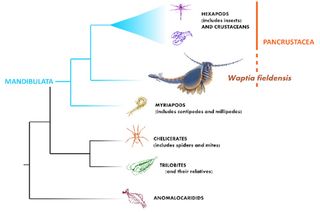
The family tree of W. fieldensis. Notice how it falls within the mandibulata group because it has mandibles.
Detailed fossil

The thumb-size W. fieldensis was a powerful swimmer.[Read more about the shrimp-like Cambrian critter]
Back end
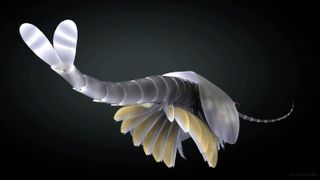
The shrimp-like tail of W. fieldensis. The fringed appendages under its body helped it paddle underwater.
Sign up for the Live Science daily newsletter now
Get the world’s most fascinating discoveries delivered straight to your inbox.
Stalked eyes
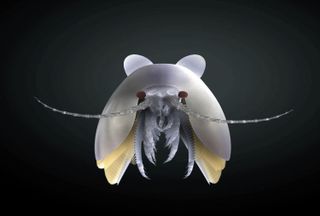
W. fieldensis had stalked eyes.
Spiny legs
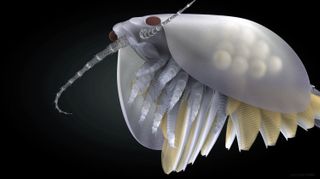
W. fieldensis used its spiny front legs to grab and disembowel prey.
Charles Doolittle Walcott
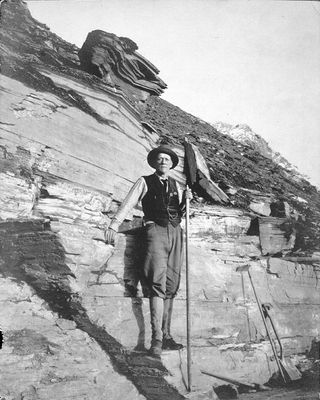
The American paleontologist Charles Doolittle Walcott (1850-1927) discovered W. fieldensis in 1909 in the fossil-rich Burgess Shale deposit of the Rocky Mountains of British Columbia, Canada.
However, scientists haven't formally described the ancient critter in the scientific literature until now.
Drawings and notes

Walcott drew illustrations and described W. fieldensis in his notebook in 1909.

Laura is the archaeology and Life's Little Mysteries editor at Live Science. She also reports on general science, including paleontology. Her work has appeared in The New York Times, Scholastic, Popular Science and Spectrum, a site on autism research. She has won multiple awards from the Society of Professional Journalists and the Washington Newspaper Publishers Association for her reporting at a weekly newspaper near Seattle. Laura holds a bachelor's degree in English literature and psychology from Washington University in St. Louis and a master's degree in science writing from NYU.
